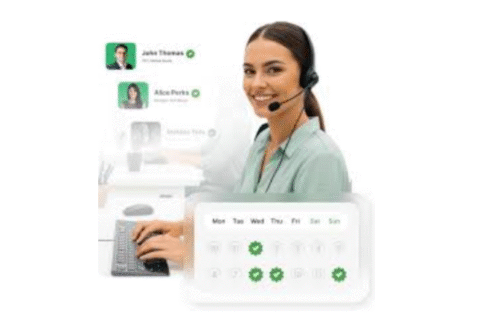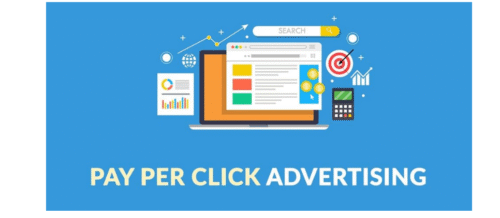The Unsung Hero of E‑Commerce: Why PIM Software Is No Longer Optional
November 19, 2025How to Edit PDF Files Online: Simple Tools for Fast and Easy Changes
November 19, 2025How to Generate Leads for Your Business: A Complete Guide
Are you aiming for growth in your business through lead generation? If this is one of your goals, you’re lucky to have found our definitive guide to growing your company through lead generation! This article will provide you with everything
It is not an easy task to get a new business, as almost half (45%) of B2B sales reps claim that finding high-quality leads is their most difficult challenge. However, the positive thing is that becoming proficient in B2B lead generation can be a very straightforward process.
Let’s explore how generating leads can help you succeed in your business.
What is B2B Lead Generation?
B2B Lead generation is a process that requires the business to acquire user data through different avenues that can be from content offers, webinars, free trials, or newsletters. When a business only tries to attract people that are already looking for solutions, they end up making real connections which is what results in them growing their business in a way that is sustainable.
Don’t confuse leads with prospects. A lead is a potential customer who must be qualified to become a prospect.
There are mainly three different types of leads depending on their level of interest:
- Marketing Qualified Lead (MQL)
- Sales Qualified Lead (SQL)
- Product Qualified Lead (PQL)
3 Foundations of Effective Lead Generation
Know that performing market research is a must in your lead generation work. process. To generate effective leads, it’s critical to focus on the location in which they reside, their age, yearly income, and prior purchasing patterns.
1. The Importance of Specificity
Knowing exactly who your target audience is a very crucial thing that gives companies the opportunity to adjust their communication and what they offer. By being specific, companies can hatch targeted strategies that are highly effective and successful instead of using a general approach.
2. Creating Buyer Personas
You need to create a buyer persona, which is a semi-fictional profile of your target customer based on data and market research. Typically, a company will have more than one buyer persona modeled after particular segments of its audience.
3. The Role of Market Research
Market research merges consumer behavior and economic trends to validate and develop your business idea. By conducting market research, you are able to lower the risks that are associated with the early stages of your business.
Attracting Leads Through Valuable Content Marketing
A strategic content marketing approach aimed at lead generation should include creating valuable, targeted content by using lead magnets to capture data and nurturing these leads to convert them into customers.
Inbound Approach
Inbound leads are very valuable since they are practically ready for the sales process as soon as you find a way to get in touch with them. Compared to cold leads, those who make a move to your product or service are by far the most buying ones and thus can be turned into customers in a much shorter time.
Search Engine Optimization (SEO) Basics
The fundamental SEO plan that works with content marketing to bring in new customers to your business is essentially emphasizing the use of keywords that have a commercial intent, creating excellent content that solves the reader’s problem. This approach also positions the brand as an authority and covertly converts visitors into customers by using well-placed and crystal clear call-to-action (CTA) buttons.
Accelerating Lead Flow with Digital Advertising
Digital marketing gets new clients for the business by implementing different strategies such as paid ads on search and social media, content marketing, and email marketing. Integrating these methods allows businesses to reach potential customers where they are online and guide them toward becoming leads.
Pay-Per-Click (PPC) Advertising
Targeted ads help attract and convert potential customers, but maximizing conversion rates depends on both precise targeting and PPC landing pages optimized for user intent. 
Social Media Advertising
Social media advertising is the process that directly attracts potential buyers through paid advertisements on different channels such as Facebook, Instagram, and LinkedIn to reach the most accurate, targeted audience.
It’s one of the main elements of the online promotion. It is mainly used for engaging with customers, increasing the visibility of the brand and obtaining the details of potential customers through the implementation of planned content and amazing offers.
Build Relationships and Find Prospects Through Social Media & Networking?
Some of the ways through which you can use social media to generate leads are to keep on creating and sharing valuable content, to run targeted ad campaigns and to actively engage with your audience in the relevant groups and discussions.
You should focus on making your profiles perfect with a clear call-to-action and by using such things as contests or exclusive content to motivate people to submit their contact information.
In the case of B2B, LinkedIn is the best platform for getting in touch with the people making the decisions, whereas other platforms like Facebook can be used to create a community and run local ads.
Lead Capture & Nurturing
Capturing and nurturing leads is essentially creating a steady flow of enticing proposals and helpful resources to prospects that influence them to move further down the sales funnel.
Initially, Sales reps attract a lead’s attention and interest by offering them an informative piece of content; thereafter, they turn leads into customers by strengthening the relationship and demonstrating how their product or service is the ideal solution to their most pressing problems.
Key Strategies
- Clear Call to Action (CTA)
- Optimizing Landing Pages
- Email Marketing
- Lead Scoring
- Drip Campaigns
- Customer Relationship Management (CRM) Systems
Measuring Success and Optimization
The way to evaluate the effectiveness of lead generation efforts and the associated optimizations are essentially through monitoring some specific Key Performance Indicators (KPIs) and leveraging data for making decisions. Successful measuring involves having records of figures that are in or that relate to the entire sales funnel, from attracting customer’s interest to closing a deal.
Key Performance Indicators (KPIs)
Effective measurement is only possible when there is tracking of the metrics that are visible throughout the sales funnel, from the first interaction with the product to the final sale.
- Lead Volume & Source: The total number of leads that are generated and the channels
- Cost Per Lead (CPL): The campaign cost that is considered the total is divided by the number of leads generated.
- Lead Quality (MQLs vs. SQLs): It evaluates the degree to which the leads correspond to the ideal customer profile (ICP) and the likelihood of them to convert.
- Conversion Rates: Defines how many leads go on to the next stage of the funnel and are thus converted from one level to the other in percentage terms.
- Customer Acquisition Cost (CAC): The full cost of the marketing and sales endeavors, which is then divided by the number of new customers obtained.
- Customer Lifetime Value (CLV): The extent of the total revenue that the business can generate from one customer in the course of their relationship.
- Return on Investment (ROI): The most important profit measure that depicts a percentage as the result of the calculation: ((Revenue – Cost) / Cost) * 100.
- Time to Conversion (Sales Cycle Length): The time that it takes on average for a lead to be converted into a customer who pays for the product.
A/B Testing
Keep different elements of your campaigns (for instance, ad copy, email subject lines, landing page layouts and calls-to-action) testing to figure out what vibes best with your audience.
The Feedback Loop
The cycle begins with defining objectives and gathering information about the performance of campaigns.
For instance,
how many customers were acquired and how engaged they are, in order to evaluate the success of the activities through key performance indicators (KPIs).
After that, analyze the information to identify the good and the bad and rely on those findings to decide the exact, data-driven marketing, sales, or product changes. At the end, inform both your team and customers about the changes and keep on checking the results to adjust your strategy even more.
Conclusion
We’ve simplified what you need to build a successful lead generation strategy to grow your business. We understand it can feel overwhelming, but rest assured, you’re not alone. Lead generation is a top priority for every B2B marketer, but it doesn’t have to be daunting.
We’ve broken the process into easy-to-follow steps so you can master the essentials without the stress. You’ll establish a strong foundation by understanding your sales funnel, identifying your buyers, and creating compelling content.
